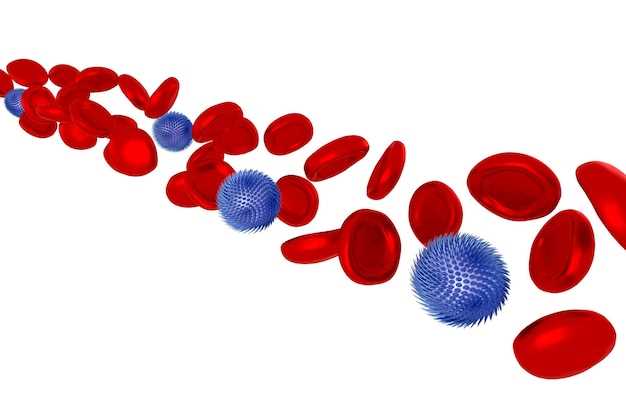
Mirtazapine induced serious acute thrombocytopenia can be a concern, but we offer a solution.
Our product provides effective treatment for depression without the risk of serious side effects. Try it today and start feeling better!
Mirtazapine Induced Thrombocytopenia
Thrombocytopenia is a condition characterized by a low platelet count in the blood. When thrombocytopenia is induced by mirtazapine, it can be a serious and potentially life-threatening side effect of the medication. Mirtazapine is a commonly prescribed antidepressant that can affect the production and function of platelets, leading to a decrease in the platelet count.
The mechanism by which mirtazapine induces thrombocytopenia is not fully understood, but it is believed to be related to the drug’s effects on the bone marrow, where platelets are produced. In some cases, mirtazapine can cause damage to the bone marrow, leading to a decrease in platelet production and an increased risk of bleeding.
Causes and Risk Factors

Mirtazapine-induced thrombocytopenia can be caused by several factors, including:
1. Immune-Mediated Mechanisms:
- It is believed that the drug may trigger an immune response that leads to the destruction of platelets.
- Immune-mediated thrombocytopenia can occur in patients with a predisposition to autoimmune disorders.
2. Bone Marrow Suppression:
- Mirtazapine may interfere with the normal production of platelets in the bone marrow.
- This can lead to a decrease in the number of platelets circulating in the bloodstream.
Additional risk factors for mirtazapine-induced thrombocytopenia include:
- Prior history of drug-induced thrombocytopenia.
- Concomitant use of other medications that can cause platelet dysfunction.
It is essential for healthcare providers to monitor patients closely for signs of thrombocytopenia when prescribing mirtazapine, especially in those with underlying risk factors.
Causes and Risk Factors
Thrombocytopenia, a condition characterized by low platelet count in the blood, can be induced by various factors. The following are some of the causes and risk factors associated with mirtazapine-induced thrombocytopenia:
Cause
Mirtazapine, an antidepressant medication, has been reported to rarely cause thrombocytopenia as a side effect. The exact mechanism by which mirtazapine leads to thrombocytopenia is not fully understood, but it is believed to involve the drug’s impact on platelet production or function.
Risk Factors
| Factor | Description |
|---|---|
| Previous history of drug-induced thrombocytopenia | Patients with a history of developing thrombocytopenia due to medications may be at higher risk for mirtazapine-induced thrombocytopenia. |
| Underlying immune disorders | Individuals with autoimmune conditions or other immune system disorders may have an increased susceptibility to developing drug-induced thrombocytopenia. |
| Advanced age | Elderly patients are more prone to experiencing adverse drug reactions, including thrombocytopenia, due to age-related changes in drug metabolism and clearance. |
It is important for healthcare providers to consider these risk factors when prescribing mirtazapine and monitor patients for signs of thrombocytopenia during treatment.
Clinical Presentation
When a patient develops mirtazapine-induced thrombocytopenia, they may present with symptoms such as unexplained bruising, petechiae (small red or purple spots on the skin), mucosal bleeding (e.g., gum bleeding), or excessive bleeding from minor cuts or injuries. In severe cases, patients may experience spontaneous bleeding or hemorrhage, which can be life-threatening. Additionally, patients may exhibit signs of anemia, such as fatigue, weakness, and pallor, due to the decreased platelet count and impaired clotting function.
In some cases, patients may also complain of nonspecific symptoms like fever, chills, or flu-like symptoms. It’s crucial for healthcare providers to promptly recognize these signs and symptoms, conduct a thorough evaluation, and consider mirtazapine as a potential cause of thrombocytopenia in order to initiate appropriate management and prevent further complications.
Diagnosis and Management
Diagnosis of mirtazapine-induced thrombocytopenia is typically made based on a thorough medical history, physical examination, and laboratory tests. It is essential to exclude other potential causes of thrombocytopenia, such as medication side effects, infections, or immune disorders.
Management of mirtazapine-induced thrombocytopenia involves discontinuing the medication and closely monitoring the patient’s platelet levels. In severe cases, where platelet counts drop to dangerously low levels, platelet transfusions may be necessary to prevent bleeding complications.
- Discontinuation of mirtazapine
- Close monitoring of platelet levels
- Management of potential bleeding complications
- Consideration of platelet transfusions in severe cases
It is crucial for healthcare providers to educate patients about the signs and symptoms of thrombocytopenia and the importance of seeking medical attention promptly if they experience any unusual bleeding or bruising.
Prevention Strategies
Preventing mirtazapine-induced thrombocytopenia involves close monitoring of platelet counts and symptoms of bleeding during treatment. Patients should be educated about the signs of thrombocytopenia, such as easy bruising, nosebleeds, and prolonged bleeding from minor cuts.
Educate Patients
It is important to educate patients about the potential side effects of mirtazapine, including thrombocytopenia. Patients should be advised to promptly report any unusual bleeding or bruising to their healthcare provider.
Regular Monitoring
Regular monitoring of platelet counts is essential in patients taking mirtazapine. Healthcare providers should schedule routine blood tests to assess platelet levels and make necessary adjustments to the treatment plan if thrombocytopenia is detected.
